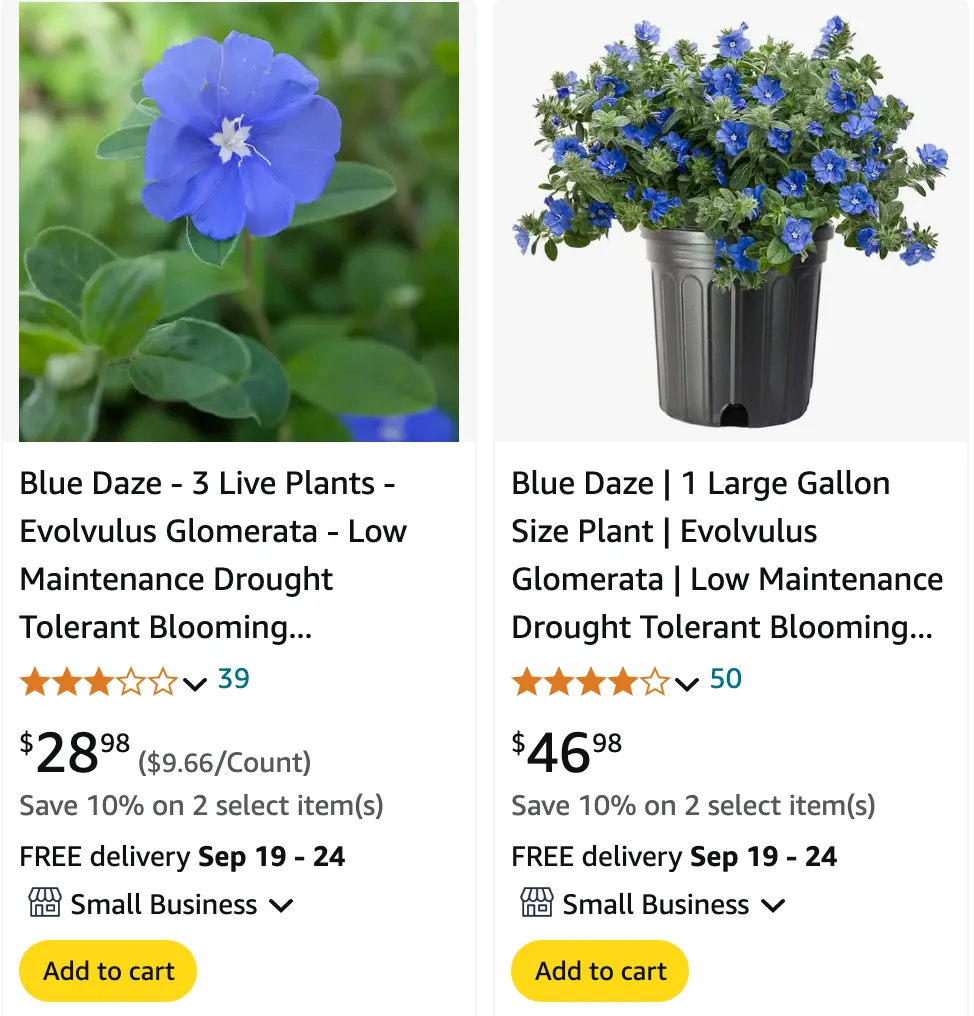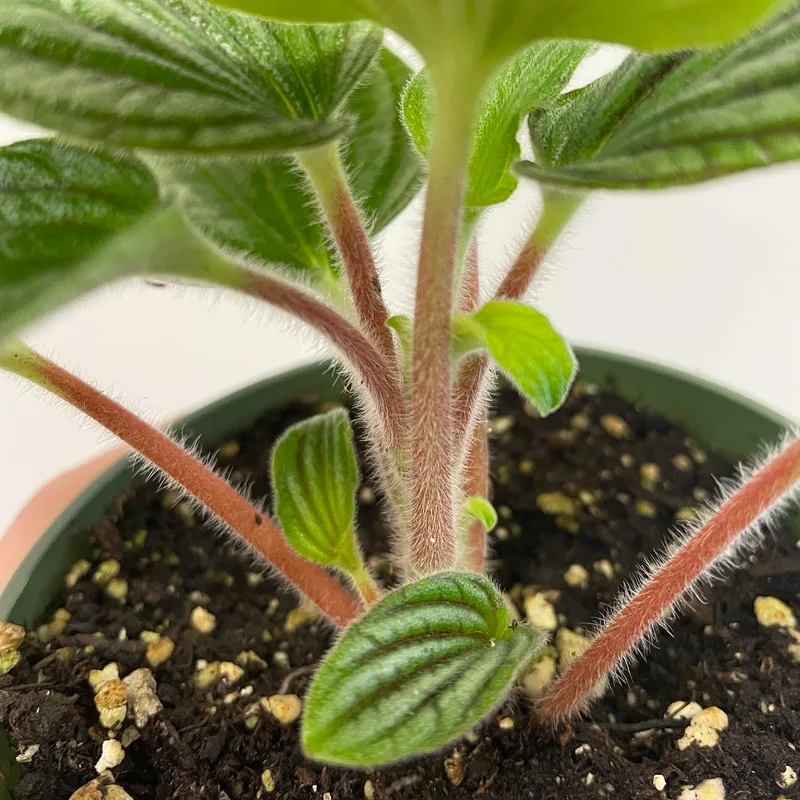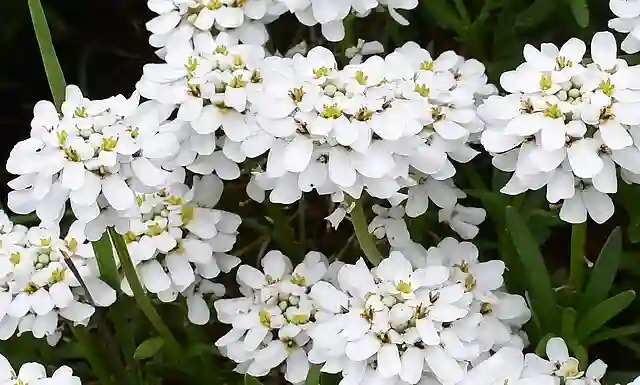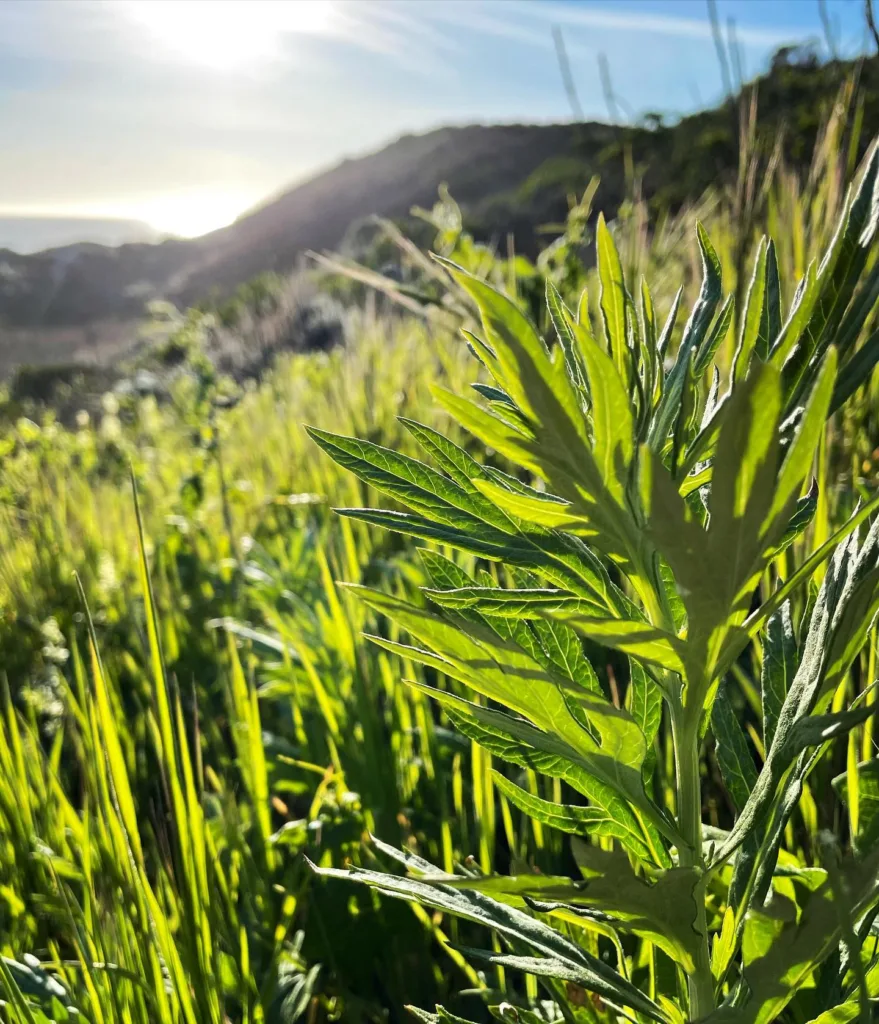
What Is Blue Daze Evolvulus?
Blue Daze Evolvulus, also known as Evolvulus Glomeratus, is a vibrant, ground-covering plant prized for its stunning, sky-blue flowers. This low-growing perennial is ideal for brightening up garden beds, containers, and hanging baskets with its cheerful, cascading blooms. Its compact nature and ability to handle full sun make it a popular choice among gardeners looking to add a splash of color to their outdoor spaces.
106 Species in Genus Evolvulus
Is Blue Daze Evolvulus a Perennial?
Yes, Blue Daze Evolvulus is indeed a perennial. This means that, under the right conditions, it will come back year after year. In warmer climates, it can act as an evergreen, maintaining its lush foliage throughout the winter. In cooler regions, it may die back during the colder months but will return in the spring, provided it’s not exposed to frost.
How to Grow Blue Daze Evolvulus?
Growing Blue Daze Evolvulus is relatively straightforward. Here’s a step-by-step guide to get you started:
- Choose the Right Location: Blue Daze Evolvulus thrives in full sun, so select a spot that gets at least 6 hours of sunlight per day. It’s also tolerant of partial shade but will bloom less profusely.
- Prepare the Soil: This plant prefers well-draining soil. Amend your soil with organic matter if it’s heavy or clayey to improve drainage.
- Planting: Space your plants about 12 to 18 inches apart to allow for their spreading habit. Dig a hole that’s twice as wide as the root ball and just as deep. Place the plant in the hole, fill it with soil, and water thoroughly.
- Watering: Keep the soil consistently moist, especially during hot weather. However, Blue Daze Evolvulus is somewhat drought-tolerant once established.
- Fertilizing: Feed your plant with a balanced, water-soluble fertilizer every 4-6 weeks during the growing season to promote healthy growth and abundant blooms.
How to Care for Blue Daze Evolvulus?
Caring for Blue Daze Evolvulus involves a few key practices:
- Pruning: To keep the plant looking its best and encourage more blooms, prune it back after the first flush of flowers. Remove any dead or straggly stems.
- Pest and Disease Management: This plant is relatively pest-resistant but can occasionally suffer from aphid infestations. Regularly check for pests and treat with an appropriate insecticide if needed. Ensure proper spacing to avoid fungal diseases.
- Winter Care: In cooler climates, mulch around the base of the plant to protect the roots during winter. In areas where temperatures drop below freezing, consider bringing containers indoors or treating it as an annual.
How to Propagate Blue Daze Evolvulus?
Propagating Blue Daze Evolvulus can be done through cuttings or seed:
- Cuttings: Take 4-6 inch cuttings from a healthy plant, remove the lower leaves, and place them in a pot with a rooting hormone and a well-draining potting mix. Keep the cuttings moist and in a warm, bright location until they develop roots.
- Seed: Sow seeds indoors about 6-8 weeks before the last frost date. Plant them in a seed-starting mix and keep them warm and moist until germination. Transplant seedlings outdoors once they are strong enough and after all danger of frost has passed.
What to Plant with Blue Daze Evolvulus?
Blue Daze Evolvulus pairs well with a variety of other plants. For a stunning visual contrast, consider planting it alongside:
- Petunias: Their similar growth habits and vibrant colors complement Blue Daze Evolvulus beautifully.
- Sweet Potato Vine: Its trailing habit and lush foliage provide a nice contrast to the delicate blooms of Blue Daze Evolvulus.
- Marigolds: Their bright orange and yellow flowers offer a striking contrast to the blue hues.
Can You Grow Blue Daze Evolvulus Indoors?
While Blue Daze Evolvulus is typically grown outdoors, it can be grown indoors in bright, sunny locations. Ensure it receives at least 6 hours of direct sunlight daily. It’s best suited for large containers where it has room to spread out.
Is Blue Daze Evolvulus Toxic?
No, Blue Daze Evolvulus is not considered toxic to humans or pets. However, it’s always a good idea to monitor pets and children to ensure they don’t ingest large amounts of plant material.
Benefits of Blue Daze Evolvulus
The benefits of Blue Daze Evolvulus include:
- Low Maintenance: It’s relatively easy to care for and maintains its beauty with minimal effort.
- Heat Tolerance: It thrives in hot, sunny conditions where other plants might struggle.
- Attractive Foliage and Flowers: The vibrant blue blooms and lush green foliage add aesthetic appeal to any garden.
Common Problems
Some common issues with Blue Daze Evolvulus include:
- Powdery Mildew: This fungal condition can cause a white, powdery coating on the leaves. Ensure good air circulation and avoid overhead watering to prevent this issue.
- Root Rot: Overwatering can lead to root rot. Ensure the soil is well-draining and avoid waterlogging.
Compare with Other Similar Plants
Blue Daze Evolvulus is often compared with plants like Lobelia and Bacopa. While Lobelia offers a similar blue color, it usually has a more upright growth habit. Bacopa also provides cascading blooms but can be less heat-tolerant than Blue Daze Evolvulus.
Blue Daze Evolvulus is a versatile and beautiful plant that can enhance any garden with its striking blue flowers and easy-care nature. Whether you’re planting it as a ground cover or in containers, it’s sure to bring a splash of color and charm to your outdoor space.
If i die, water my plants!



